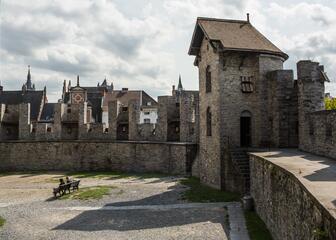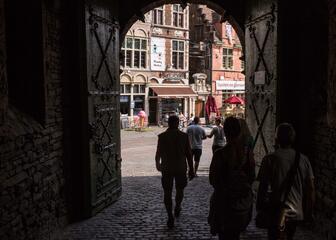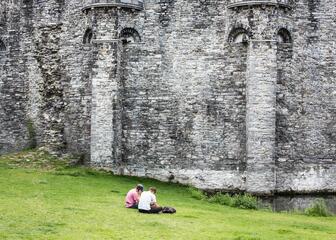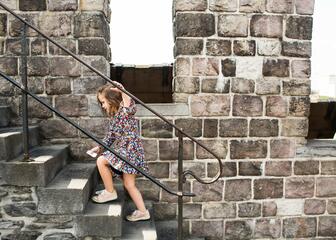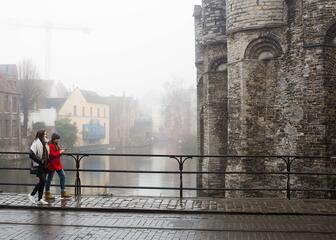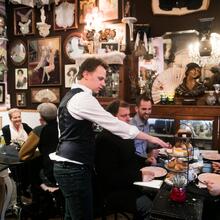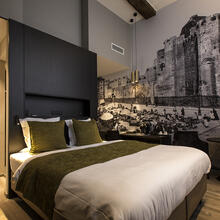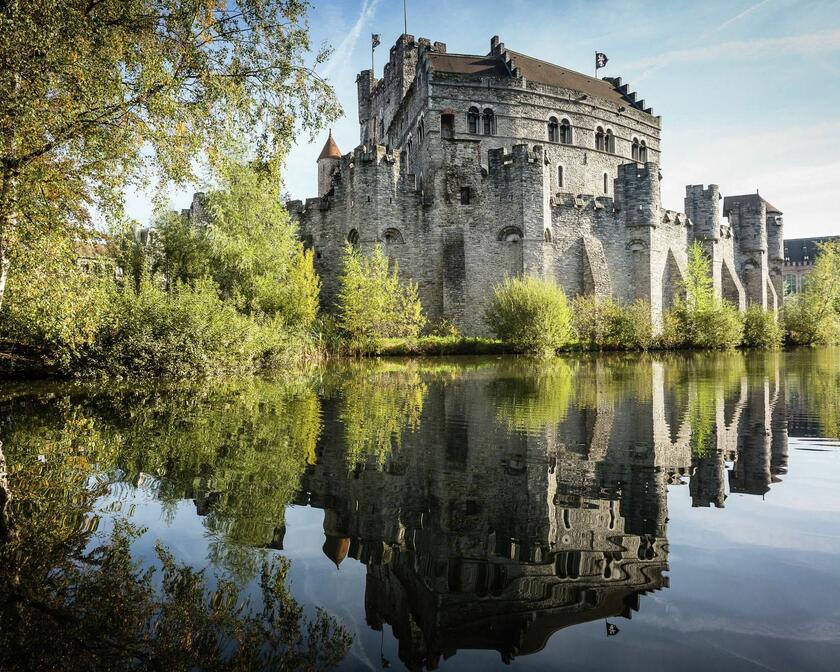
Torture at the Castle of the Counts
The Castle of the Counts boasts a unique collection of torture equipment. What used to be the pantry now features the torture equipment, which is displayed in a suggestive executioner's cabinet. The former courtroom features the collection of judicial objects. The Castle of the Counts also hosts all kinds of cultural activities, events and activities, for example during the Ghent Festivities. It is also a popular place to get married for Ghent’s locals.
The keep, symbol of the Counts’ power
Go back in time inside this majestic fortress. Its history goes back to the time of the Roman occupation, when there was already a settlement on a sand bank by the River Lys. After a brief period of Viking plundering, the Counts of Flanders converted the earlier wooden constructions into a keep (living quarters) in the Middle Ages, with ramparts built entirely of stone, replete with 24 towers. The imposing building with its military architecture was a symbol of the Counts’ power in the turbulent city of Ghent.
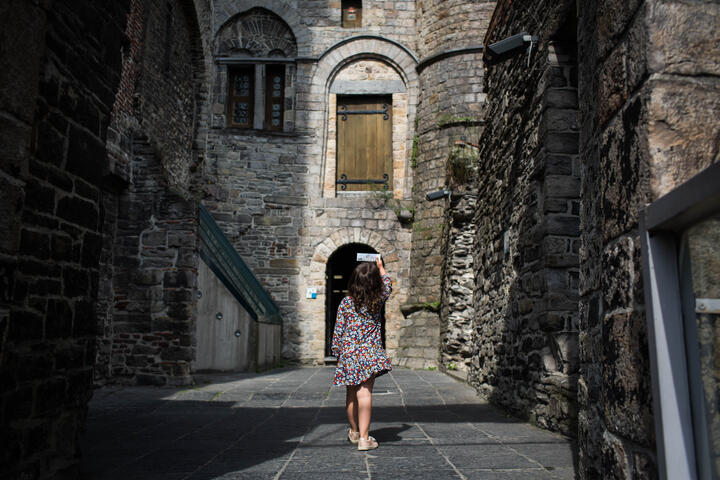
Unique audio tour and visio guide
Would you like to visit the Castle of the Counts with a touch of humour? Then opt for the audio visit, voiced by Flemish comedian Wouter Deprez, and explore the castle and its surroundings with a smile on your face! He will take you on a journey through the castle's history, packed with funny anecdotes and exciting battles between knights in the background. Maybe you will even hear a story which is still unknown to many Ghentians!
The comedy tour is also available for the hearing impaired. A visio guide in Flemish or International Sign will take you on a tour of the castle. A tablet with 18 videos is included in the entrance price and can be requested in the shop of the Castle of the Counts.
Shop
Did you enjoy your visit to the Castle of the Counts? Be sure to take a look in the shop. You will definitely find something to your liking to remember this visit or to gift to your friends and family back home.
The Battle of the Castle of the Counts
The Castle of the Counts could only be taken by one army: students protesting against rising beer prices and the fact that the police were to replace their white helmets with less noticeable blue caps in 1949. To this day, the Battle of the Castle of the Counts is commemorated with a cantus song and the annual Castle of the Counts procession in November.
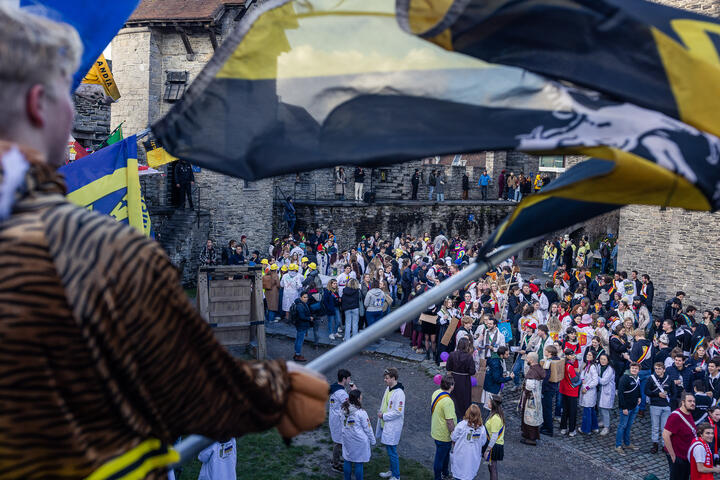
Count Philip and his castle: dominating the city
Count Philip of Alsace wanted everyone to know that he was the boss. A Latin inscription above the entrance states that Count Philip (1168-1191) built the castle in 1180. The sense of wealth and power that his castle gave him is brought to life when you stand between the battlements at the top of the keep and gaze out over the vibrant city of Ghent.
Industrial revolution banishes knights from Ghent
You are bound to be fascinated by the twists and turns in the story of the Castle of the Counts during your weekend getaway. In the late 18th century, the Castle of the Counts was sold to private owners who later converted it into a factory complex. In 1807, the fortress in the heart of Ghent housed a cotton mill, and its outbuildings served as primitive dwellings for about fifty families of workers. When the mill and its workers left, the Castle of the Counts was in a state of complete disrepair, ready for demolition.
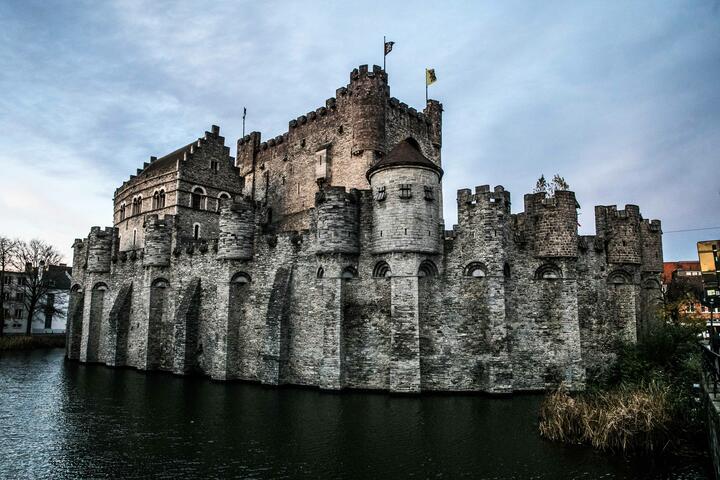
Torture chamber becomes tourist sight in Ghent
By that point, the Castle of the Counts was a symbol of abuse of power, feudal repression, horrific torture methods and a cruel inquisition as far as the people of Ghent were concerned. Restoration gave the Castle of the Counts a new meaning and world fame as Ghent’s most important tourist sight, partly due to the World Expo 1913, which took place in Ghent.
Hidden tribute to Van Eyck
On the occasion of the Van Eyck year (2020-2021), the City of Ghent commissioned a new mural. Spanish artist Taquen created his own version of ‘Portrait of a Man in a Red Turban’, which is thought to be a self-portrait by Jan Van Eyck. Want to admire it with your own eyes? The work is only visible from one of the towers of the Castle of the Counts. So be sure to climb the stairs of this medieval fortress and look for the mural!
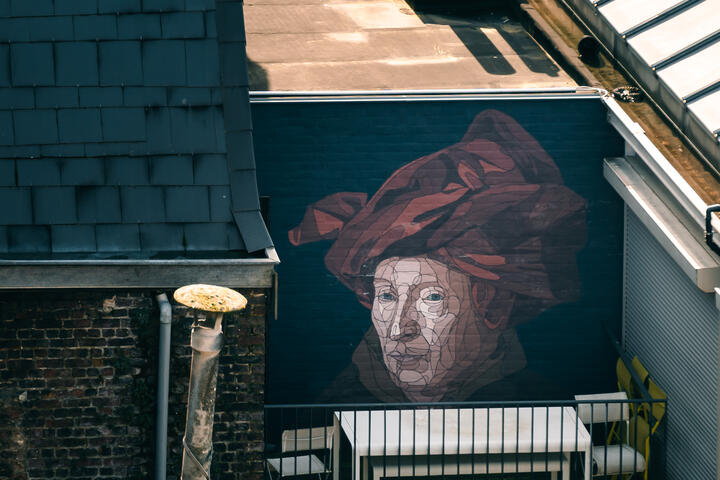
Visit the Castle of the Counts in Ghent
Do you want to dig deep into the history of Ghent? This is where you need to be. Ghent, full of charming history and modern vibrancy.
Opening hours
Entrance fee
Tickets
Holders of a CityCard Gent do not need to reserve a time slot and will always be allowed to enter. All you have to do is show your CityCard at the desk.
Tickets up to 4.40 pm.

